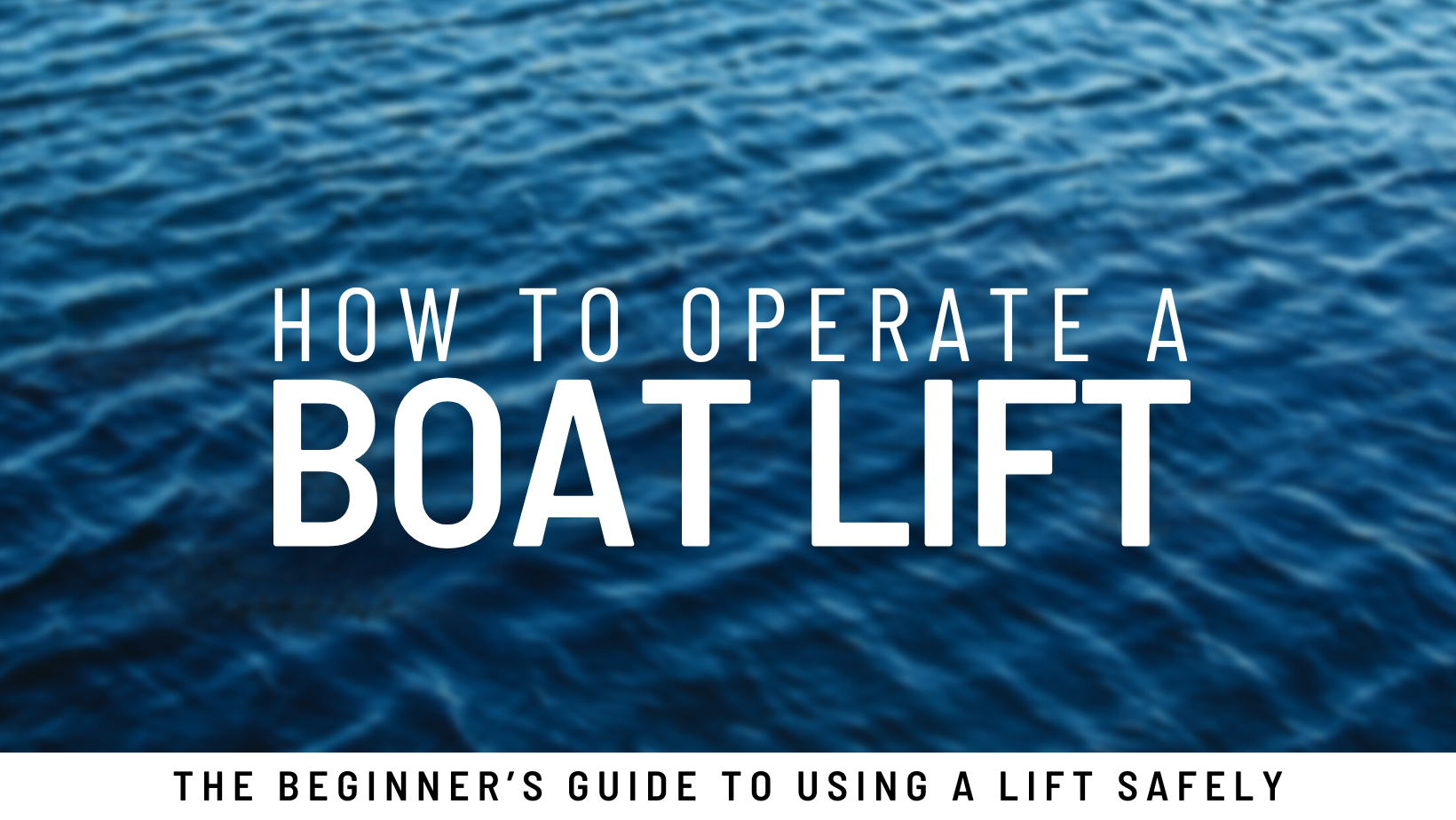
You just had your first boat lift installed in your boathouse. Or maybe you bought a house that had one already. Congratulations! There’s just one problem: you’ve never used one before. Sure, it looks easy enough: lift the handle and wait for the splash. How hard can that be?
Actually, there’s a bit more to it than that. Boat lifts are considered heavy pieces of machinery with many moving parts. Improper usage can cause injury or do damage to your lift or boat.
Worried? Don’t be. There’s a difference between a healthy respect that allows you to use your boat lift safely – and then there’s the fear that says, “let’s just keep it on the lift this year.” The purpose of this article is to get you to the first option, so you can be confident and safe as you begin using and enjoying your lift and watercraft.
This guide will cover the following areas:
Let’s get started!
Types of Boat Lifts
There are many different kinds of lifts on the market. A few of the more common types are boathouse lifts, sometimes called boat hoists, free-standing lifts, floating lifts and piling mount lifts.
While there are variations between the different models, brands and manufacturers of boat lifts, they typically operate as follows:

Free-standing boat lifts can be manual, electric, solar powered or hydraulic. These lifts are completely self-contained. They sit on the bottom of the lake and can be easily moved or adjusted. Certain brands of free-standing lifts, like ShoreStations, can have add-ons like canopies, power curtains and docking guides.
Boathouse lifts, also called boat hoists, hang from the ceiling of a boathouse. The boat sits on straps or a large aluminum frame called a cradle and is held up by two aluminum or wooden bunks. The cradle hangs from four metal cables, made of galvanized or stainless steel, that wrap around pipes and connect to a motor.
Floating boat lifts, sometimes called drive-on boat lifts, float on the water. These lifts allow easy docking and raise and lower with the water levels.
Piling mount lifts are similar to boathouse lifts, but instead of hanging from the ceiling, the lift rests on top of four pilings. These lifts are installed on pre-existing pilings and don’t require a boathouse.
How to Use a Boat Lift
1. Make sure the boat is empty. If you have a boathouse lift, you need to make sure no one is on the boat before you operate it. It may be tempting to want everyone situated before the boat hits the water, so all you have to do is lower it and head on out. However, this is not safe.
It’s important to never raise or lower your boat lift with someone inside.
Your boathouse lift is made to lift your boat, not people or animals. Boat lift cables wear out over time and can snap with little to no warning. Where elevators have extra cables and safety systems to prevent injury or damage if a cable snaps, boat lifts do not, so there’s nothing to stop passengers from being jolted or hurt.
2. Lower the lift into the water. For lifts operating on a motor or hydraulics, there will be a switch located on or near your lift. You will simply turn and hold the switch in the “down” position. For lifts operated by a wheel, simply turn the crank.
Lower your lift until the boat starts to float off the cradle.
If you have a boathouse lift, be careful not to lower your lift too far down. Your cradle can hit the bottom of the lake and start to unwrap the cables. When you raise your lift up again, the cables can re-wrap improperly, causing your lift to hang lopsided and wear out your cables faster.

If you have a boathouse lift, you'll operate it using a switch (above).
3. Back out of the lift carefully. Once your boat is in the water, you can safely board and back out of your lift. Use caution when backing out. Be aware of your surroundings and go slowly – you don’t want to hit something or someone else.
Note: If you ever need to take your boat off the lift for extended periods of time, do not leave your cradle in the water. Leaving your lift in the water can cause it to rust and wear prematurely.
How to Dock a Boat on a Lift
1. Empty the ballast. Boat lifts have different weight capacities and are installed to match the weight of your boat. Trying to lift a boat with a full ballast can add more weight than your lift was intended to support, causing your lift to wear out faster or damage it – so it’s best to always empty it out before docking on your lift.
2. Drive onto the lift slowly. To raise your boat, float over the cradle until the back of your boat is close to the back of the cradle. There will, and should, be more of the boat hanging off the front of the cradle than the back.
Just be cautious when docking and take it slow. Some lifts have built-in guides to help you dock, but it’s always best to take it slow and be aware of your surroundings.
3. Exit the boat. As mentioned, it’s important to not operate your boathouse lift with anyone in the boat. Have everyone safely exit before you raise it up.
4. Raise the lift above the waves. Crank the wheel or turn your switch into the “up” position. Raise your lift until your boat is above any potential wave action. In other words, lift it high enough that no waves will hit your boat or cause your lift to swing.
If you have a boathouse lift, be careful not to raise the lift too high or leave the switch unattended. Leaving the lift running in the “up” position for too long can run your boat into the roof of the boathouse and cause severe damage – so use caution!
Whether you’re a new or veteran boat lift user, we hope this guide has helped you understand your lift more and feel confident operating it safely. Happy boating!
Other Articles:
- Stainless Steel or Galvanized Cable: Which Is Best for Your Boat Lift
- 3 Ways to Prepare Your Boat Lift for a Hurricane
- Preparing for Hurricane Season: How to Secure Your Boat Lift for a Storm
For questions or concerns, call our office at 352-394-5666 or email us at pam@rjsboatlifts.com.

